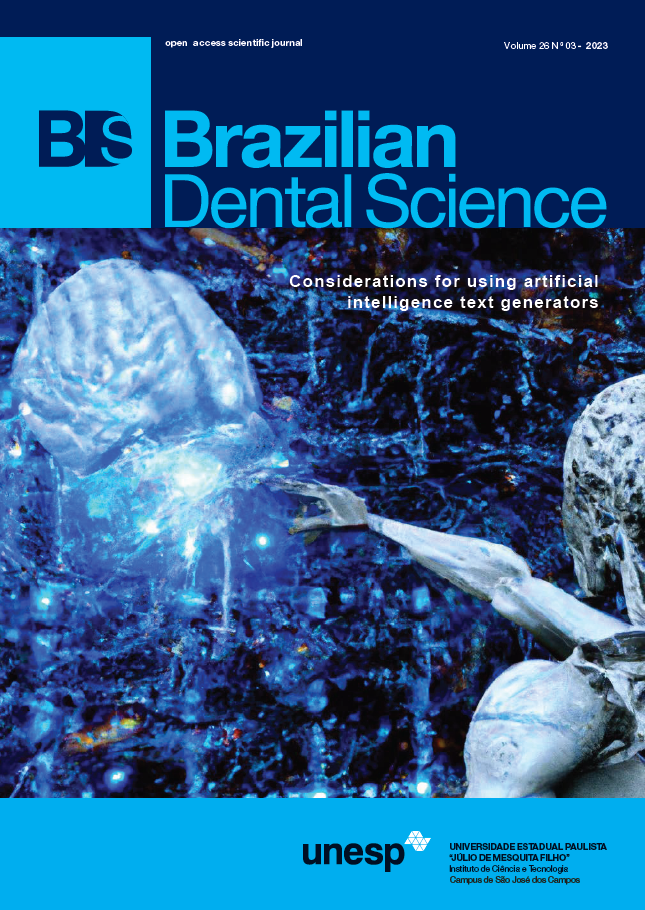Streptococcus mutans and Streptococcus dentisani in dental biofilm of children with different caries status: a pilot study
DOI:
https://doi.org/10.4322/bds.2023.e3782Abstract
Objective: Streptococcus mutans is one of the etiological agents associated with caries due to its ability to
metabolize carbohydrates and resist acidic environments. On the other hand, Streptococcus dentisani, shows
characteristics associated with caries control due to its ability to inhibit growth of cariogenic bacteria. The
aim of this work was to quantify the levels of Streptococcus mutans and Streptococcus dentisani from dental
biofilm of children related to their caries situation. Material and Methods: After identification of morphologic
characteristics of reference strains was performed, clinical isolates of biofilm compatible with these strains were
selected and the Polymerase Chain Reaction technique was performed using species-specific primers. Biofilm
samples from 25 children with caries and 21 without caries were collected to quantify the levels of S. mutans and
S. dentisani. Results: There were statistically significant differences in the levels of S. mutans in the caries group
and the levels increased as the severity of the carious lesion increased. By contrast, higher levels of S. dentisani
were found in the caries-free group, although no statistically significant differences were found. In addition,
the levels of S. dentisani decreased as the severity of the carious lesion increased. Conclusion: The increase
in the frequency of S. dentisani in the caries-free group suggests the possibility of requiring minimum levels of
this species in the dental biofilm to show an actual protective effect. It must also be considered that this effect
might be related to intrinsic factors in children and the intraspecies genetic variability found in every individual.
KEYWORDS
Biofilm; Clinical isolates; Dental caries; Streptococcus dentisani; Streptococcus mutans.
Downloads
Published
How to Cite
Issue
Section
License
Brazilian Dental Science uses the Creative Commons (CC-BY 4.0) license, thus preserving the integrity of articles in an open access environment. The journal allows the author to retain publishing rights without restrictions.
=================




























